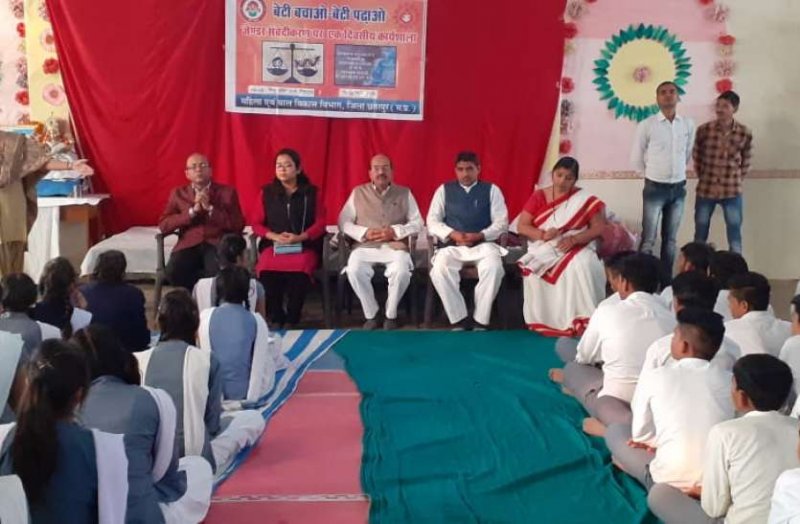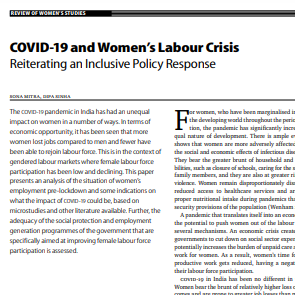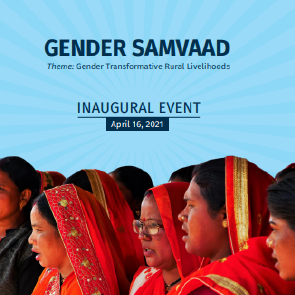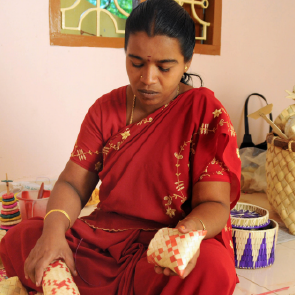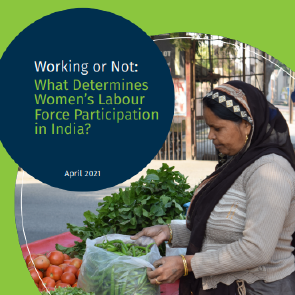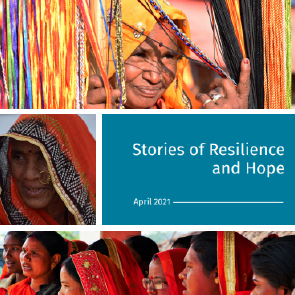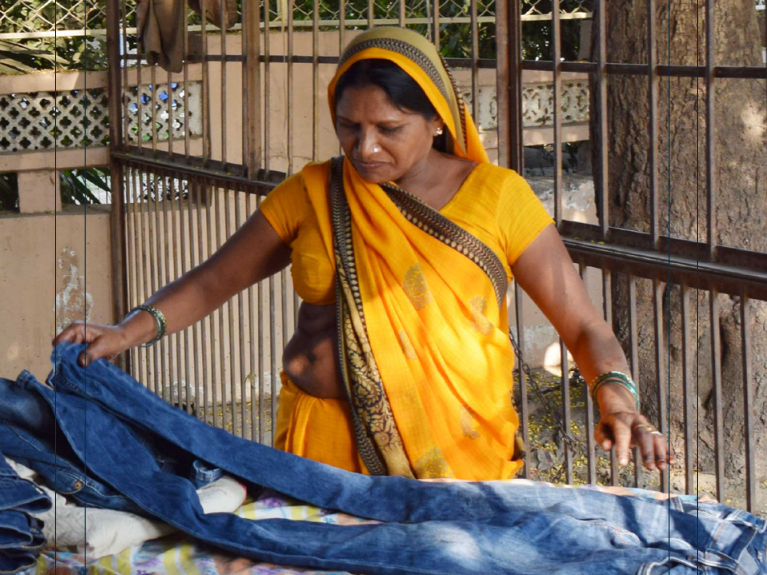iwwage_admin
Undoing Unpaid Work: Tackling Time Poverty is Key to Address Gender Inequality
A recent announcement from a political party in Tamil Nadu has pushed forward frequently halted debates around recognizing women’s unpaid work. The party promises to pay housewives a monthly wage to recognize and support their household work. This announcement has come at a crucial juncture as the world adapts to a ‘new normal’, unfortunately the burden of this new normal is falling disproportionately on women in different ways. These unprecedented times precipitated by the COVID19 crisis have unfolded new layers of the gendered dimensions of unpaid care work. It has deepened pre-existing gender inequalities, increased women’s economic and social insecurity, domestic violence, unpaid care work, and also disconnected them from availing institutional and social support (UN Women 2020). Due to the closure of schools and families at home, women’s care work increased by 30% during COVID19 (Khan and Nikore 2020). The pandemic has shown that women bear the brunt of ‘disproportionately divided domestic duties’ which points to the larger issue of the gendered nature of unpaid work.
The arrangement of social structures, patriarchal system, and prevalent gender norms expect women to perform certain roles which tend to confine their choices and actions. It gives rise to complex forms of invisible gender inequalities. Gendered dimensions of housework portray the existence of such inequalities. Women are subjected to ‘dual burdens’ of household work and work performed for income-generating activities. Household work is unpaid and unrecognized and is classified as ‘unproductive work’ and no equation calculates its direct or indirect value to the economic system. Women face time deficiency for meeting their personal requirements and it is termed as ‘time poverty’ in a simpler way and is often linked to the ‘crises of care’ (Fraser, 2016). Spending long hours in unpaid housework have large implications in women’s lives which go beyond any monetary value. Women’s engagement in unpaid work constitutes to be one of the main reasons for their economic and social disempowerment. (UN Women 2018). The burden of housework and the varied demands of caring activities at the household levels restrict women’s ability to participate in work outside the home (Deshpande and Kabeer 2019). Every day, an average Indian female spends 5 hours per day in unpaid domestic work, compared to 1.5 hours by a male (NSS Time Use in India, 2019). The same report shows that 82.1 percent of women in rural India spend their time in unpaid domestic services for household members against 27.7 percent of men. Moreover, as per Jal Shakti’s Jal Jivan Mission’s Dashboard (March 2021), only 36.54% of the rural households have Functional Household Tap Connections which means that the majority of the households have to collect water from a public facility or any other water body in the village and women are more likely to be assigned with this responsibility. Less than 45% of households use clean fuel for cooking in five states as per NFHS5 (Phase1) which means that these households use traditional ways of cooking that is time-consuming and mostly women are engaged in this.
Therefore, women in rural India might face acute levels of time poverty due to multiple factors of deprivation that leave them with little time to devote to their personal well-being. Oxfam’s India Inequality Report 2020 highlighted that societal norms in rural areas do not allow women to ask men to share the burden of housework. In an article on time poverty, it is argued that “most people who are time-poor are also income-poor” and they do not have the individual choice to choose their time demands (Ghosh and Jayati 2020 p.2). It is primarily linked with their economic disadvantage which does not allow them to pay for outsourcing their housework and caring responsibilities to a third person. Moreover, in rural areas – lack of infrastructure facilities, poor availability and accessibility of goods and services, scarce public transport, and dependence on subsistence economy signify greater levels of hardship for women to complete their day-to-day activities and ultimately adding to their time poverty.
Time poverty puts stress on women’s wellbeing which goes beyond income-based poverty. Moreover, programs and interventions for women might not capture the gendered nature of time poverty when addressing women’s concerns due to the unavailability of Time Use Statistics. The inability to capture time poverty would mean that underlying factors that place women in a disadvantaged position get neglected when addressing their problems. For example, a program that aims to enhance girls learning outcomes in a government school might not take into consideration the fact that girls spend long hours engaged in housework which means they have less time available for study after school timings and ultimately impacts their learning outcomes. As per a report by UNICEF, globally girls between the ages of 5 and 14 years spend 40 percent more time, or 160 million more hours a day than boys on unpaid household chores and collecting water and firewood (UNCF 2016), Similarly, efforts to improve the political participation of women at the Panchayat level might completely neglect time deficiency as an underlying cause for lower participation of women in Gram Sabha meetings. The evidence suggests that tackling time poverty constitutes an important area of intervention to address gender inequality in rural India. For this purpose, a 4Rs Strategy is envisaged as a guiding framework to design and implement interventions in rural areas for tackling time poverty. That strategy states:
Redefine: Redefining the roles that women perform. It will require bringing a behavioral change in the men and community towards perceiving women’s roles and responsibilities and also transforming the social structures that are gender-biased.
Redesign: Redesigning the policies and frameworks that aim for gender equality. Also redesigning surveys that are well equipped to capture time poverty in women’s daily life. This will help in better availability of time use data that can extensively support the redesign and implementation of gender interventions.
Remunerate: Remunerating equally by bridging the wage gap so that women are encouraged to take part in economic activities.
Resource: Creation and access to basic infrastructure facilities and services in rural areas that can reduce women’s time in completing their day-to-day activities (collecting firewood, fetching water from a distant source, etc.). Advocating for Gender responsive care policies, puts the state at the centre of care provisioning, giving it the responsibility for framing policies that recognise and represent women and their needs in decision making arenas. There is also a potential of creating a cadre of women as a human resource through Self Help Groups who are well equipped with the knowledge, awareness and mechanism to respond to women’s demands and necessities.
Making the ‘4Rs Strategy’ a reality would require political, individual and collective actions. Governments must take efforts beyond promises for bringing the system level transformation in addressing time poverty and gender inequality. It will also require the contribution of the grass-root organizations, policy think tanks, research and gender experts on multiple fronts. At the same time it is important to involve men in the conversation, build gender perspectives bottom up and work together to create a more equal post pandemic world.
References:
Deshpande A., and Kabeer N., 2019. “(In)Visibility, Care and Cultural Barriers: The Size and Shape of Women’s Work in India,”Working Papers 10, Ashoka University, Department of Economics.
Ghosh, Jayati. “Time Poverty Is Making Indian Women Lose More Money than Ever.”ThePrint,3Oct.2020. Available from https://theprint.in/pageturner/excerpt/time-poverty-is-making-indian-women-lose-more-money-than- ever/515811/
https://ejalshakti.gov.in/jjmreport/JJMIndia.aspx
Khan R. P.,and Nikore M., 2020 “It Is Time to Address COVID-19’s Disproportionate Impact on India’s Women.” Asian Development Bank, 1 Mar. 2020.
“Nancy Fraser, Contradictions of Capital and Care, NLR 100, July–August 2016.” New Left Review, 1 Aug. 2016.
NFHS5 (Phase1), National Family Health Survey, India
NSS REPORT: TIME USE IN INDIA- 2019 (JANUARY – DECEMBER 2019). 29 Sept. 2020.
United Nations Children’s Fund, Harnessing the Power of Data for Girls: Taking stock and looking ahead to 2030, UNICEF, New York, 2016
UN Women (2018). Promoting Women’s Economic Empowerment: Recognizing and Investing in the Care Economy.
- 2020. The impact of COVID-19 on women. Policy Brief. New York: United Nations
COVID-19 and Women’s Labour Crisis
A pandemic that translates itself into an economic crisis has the potential to push women out of the labour force through several mechanisms. An economic crisis creates pressure on governments to cut down on social sector expenditures which potentially increases the burden of unpaid care and household work for women. As a result, women’s time for engaging in productive work gets reduced, having a negative impact on their labour force participation.
The COVID-19 pandemic in India has had an unequal impact on women in a number of ways. In terms of economic opportunity, it has been seen that more women lost jobs compared to men and fewer have been able to rejoin labour force. This is in the context of gendered labour markets where female labour force participation has been low and declining. This paper presents an analysis of the situation of women’s employment pre-lockdown and some indications on what the impact of COVID-19 could be, based on microstudies and other literature available. Further, the adequacy of the social protection and employment generation programmes of the government that are specifically aimed at improving female labour force participation is assessed.
Gender Samvaad Inaugural Event Report
Gender Samvaad is a joint attempt between Deendayal Antyodaya Yojana- National Rural Livelihoods Mission (DAY NRLM) and the Initiative for What Works to Advance Women and Girls in the Economy (IWWAGE) to create a common platform for generating greater awareness on NRLM’s interventions across the country and best practices, with a focus on hearing voices from the states and the field. The event is part of the Azadi Amrut Mahotsav, launched by the Prime Minister of India to commemorate 75 years of India’s independence and share the glorious traditions and progress made in several areas.
The Gender Samvaad was launched on April 16, 2021 at 4 PM. The online launch event brought together a distinguished panel of experts, including senior officials of the Ministry of Rural Development. In addition, it included voices of women champions from Andhra Pradesh, Jharkhand and Kerala, who shared their experiences on how gender mainstreaming efforts within the NRLM have helped enhance their agency. A compendium of case studies presenting inspiring stories of SHG members was also released at the event.
Women’s Entrepreneurship in India
Women’s entrepreneurship has been considered an important instrument in achieving equity in the form of better quality of life for women in the developing world. Empowerment associated with female entrepreneurship changes a woman’s position in the family unit, her community and society, not only through financial independence, but through her acquisition of a position in the national workforce traditionally left to men in developing and underdeveloped regions. Successful women entrepreneurs have been significantly contributing to employment generation, socio-economic development, and further empowerment of the female cohort. But their contribution in India has to a great extent been subject to underlying facilitators and barriers. In India, women are still limited to the micro enterprise sector, both in rural and urban areas. It has become quite clear over the years that the role and contribution of female entrepreneurs in India has been pulled back by a myriad of socio-cultural systems still in place, and perceptions of the community against women leaders and female-headed firms.
Of the 13.76 per cent female entrepreneurs reported in India now, most are small business owners rather than real entrepreneurs by definition. Entrepreneurial intention, interests and activities truly suffer in underdeveloped regions which lack physical and human capital and a conducive industrial environment. Therefore, individuals shift from being innovators to imitators, bringing in existing goods or techniques to virgin regions (Burger-Helmchen 2012). However, even such ventures on the part of entrepreneurs can bring about rapid economic development in backward areas. Rural entrepreneurship, which at this time mostly comprised female business owners, when encouraged through government interventions can radically transform the standard of living in such underdeveloped regions.
Working or Not: What Determines Women’s Labour Force Participation in India?
Women’s labour force participation is abysmally low, and persistent gender gaps characterise the Indian labour market. It is alarming to note that women have been continuously dropping out of the labour market since the mid-2000s. Their participation has been declining despite rising GDP, increasing educational attainment, rising household incomes, and declining fertility. Utilising household-level data of Periodic Labour Force Surveys (PLFS) (covering the years 2017-18 and 2018-19), and NSSO’s Employment-Unemployment Surveys (EUS) (various rounds completed in 1993-94, 1999-00, 2004-5, 2009-10, 2011-12), this paper provides systematic evidence on the country’s gender gaps in employment and labour market outcomes.
This paper tries to unpack the critical aspects of low female labour force participation in rural and urban India. Findings suggest that women have notably lower employment rates than men, even though their enrolment in schools and colleges have risen. U-shaped relationship between education and women’s labour force participation is seen, which is strongly evident in the case of urban women. Women perform a disproportionate amount of unpaid care work and domestic work and face multiple constraints in society, limiting their mobility and labour market choice, forcing them to take non-wage employment or remain out of the labour force. Our findings suggest that policies supporting women’s entry into the labour market, such as vocational and technical skills, can significantly impact increasing their participation and mitigating persistent inequalities in India’s labour market outcomes. The paper underscores the importance of a comprehensive and integrated approach and suggests investing in gender-responsive policies to break down women’s economic engagement barriers.
Stories of Resilience and Hope
With over 60 million women mobilised to be part of one of India’s largest livelihoods programme, the Deendayal Antayodaya Yojana-National Rural Livelihoods Mission (DAY-NRLM), holds great promise for advancing women’s socio-economic empowerment by organising them into self-help groups (SHGs) and institutions of the rural poor. These platforms are facilitating financial opportunities and livelihood support services for women. The livelihoods programme works exclusively with rural women, and a critical element for its success has been the mission’s commitment towards prioritising women’s perspectives and being responsive to their needs and aspirations. This approach has been embedded across all DAY-NRLM activities with the goal of strengthening women’s agency, identity, well-being, and solidarity, through women’s collectivisation.
Through the compendium ‘Stories of Hope and Resilience’ the Initiative for What Works to Advance Women and Girls in the Economy (IWWAGE) and the Deendayal Antyodaya Yojana – National Rural Livelihood Mission (DAY-NRLM) attempt to showcase the life and experiences of rural women and their gendered disadvantage, struggles and barriers. Released on April 16, 2021 at the launch of the Gender Samvaad initiative by the honourable Secretary Rural Development, Shri Nagandra Nath Sinha, the compendium captures the stories of ten women, across seven states. These Stories of Hope and Resilience weave together narratives of grit, strength, perseverance and hope. These inspiring stories demonstrate the journeys that women have taken to change their circumstances and build better futures for themselves. The compendium of case studies is representative of a number of women around the country who have been supported by Deen Dayal Antyodaya Yojana – National Rural Livelihoods Mission, to overcome their circumstances and to lead more meaningful lives.


